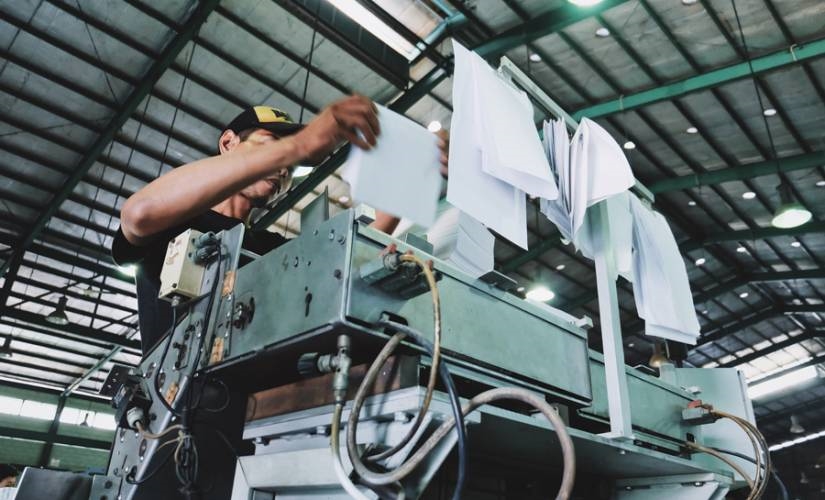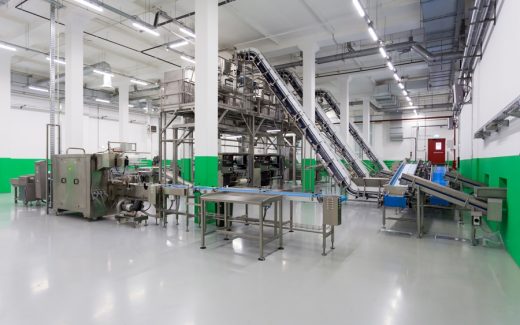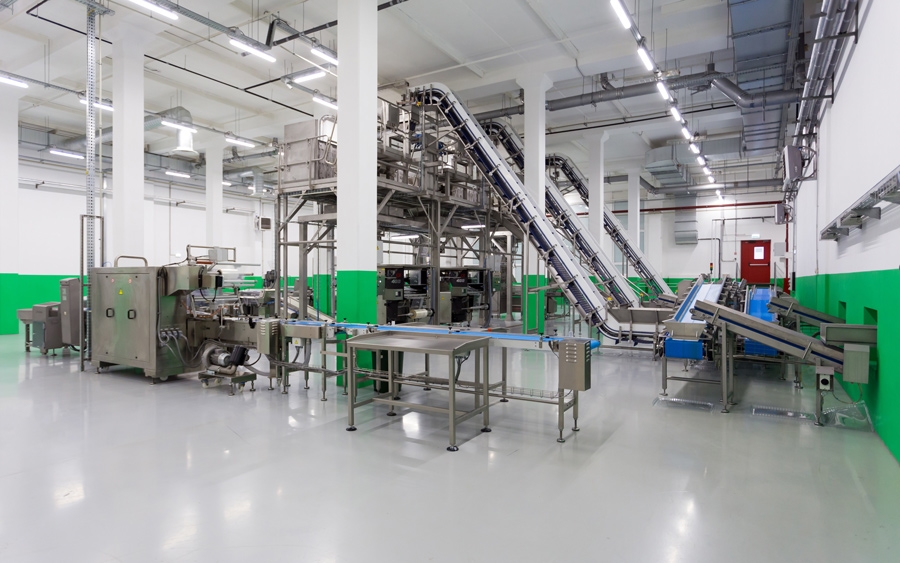9 good reasons to move forward with paperless production
9 good reasons to move forward with paperless production

Data collection on paper is still a daily practice for plant managers around the world. This process is not only time-consuming and prone to error. It also hinders real time insights in production operations. Digital technology is there to help. Here’s a look at 9 great reasons to move ahead with paperless production.
It is that time again.
An issue occurs in production and it is up to you to find answers. Sure, you know where and how to begin, but that is in fact what frightens you the most. You can already feel the paper cuts in your fingers. Or the sentiment of despair after having spent an hour in a dingy room with no windows, surrounded by paper sheets and unmarked boxes.
Are we exaggerating? In our experience, no.
Only 6% of production companies are paperless
In 2017, less than a third of North-American CEOs had a well-articulated IoT strategy. Gartner’s 2020 CEO Survey shows they are catching up. 83 percent plan to increase investments in digital transformation. However, another 2020 Gartner study reveals a paradox. Almost 50 percent of organisations appear to have no metrics in place to measure digital success.
In practice, a smart factory is therefore still a long way off.
Europe shows a similar picture. A 2020 PwC survey in Europe revealed that 91 percent of industrial companies are investing in digital factories. Yet, digitisation maturity levels vary widely. Only 6 percent of companies describe their production sites as “fully digitised”. 44 percent say they have some factory elements already connected. 41 percent are currently using digital technologies for standalone applications only.
Just like their North-American counterparts, European CEOs in the industry are realising the huge potential of paperless manufacturing. According to PwC, he number of EU companies implementing digital technologies is set to double within the next 5 years. Only a small number of companies (9 percent) are not planning to move forward with digital transformation at all.
Too bad for them.
Why paperless production is crucial in Industry 4.0
Digital technology is not a nice-to-have alternative to paper-based systems. It is a prerequisite for success in today’s manufacturing industry. Regulatory requirements for product traceability are becoming increasingly stringent. Customer demands for more flexible, custom-made products are on the rise. Paper won’t do anymore to meet these changing demands. The better option? Connecting industrial data sources through a modern Manufacturing Execution System (MES).
Connecting machines and processes through MES software has many different advantages. Primarily, it enables businesses in Industry 4.0 to plan and control the production process in real time. This will always result in improved efficiency, manufacturing flexibility and asset utilisation. To maximise the benefits, the MES requires integration with the ERP infrastructure. This allows companies to both digitise internal processes, as well as streamline the supply chain.
9 benefits of paperless manufacturing
1. Increase overall process efficiency
??Efficiency gains are in most cases the main reason for companies to invest in digital transformation. By connecting MES with processes and equipment, any industrial business can build a smart factory. Process data, both in real time and on a historical basis, are made accessible to anyone in the organisation. New data insights are leveraged to decrease defects, unplanned downtime and waste.
Through eliminating manual data collection, aggregate time from workers is freed up to focus on more useful activities. Planners no longer waste time researching the progress of each order before planning for the next shift. The time that is saved by machine operators on donkey work, can now be used to invest in more useful things. Continuous improvement initiatives or root-cause analysis, just to name a few options.
2. Comply with regulatory and client demands
Inevitably, paper processes lead to human errors and inaccuracies. At the same time, end-to-end traceability and compliance have never been of greater importance for the production industry. Food & Beverage is an industry in which data accuracy is particularly crucial. Any safety risk to consumers or large-scale product recalls should be avoided at all costs.
The benefit of going paperless in this context is obvious. Regulatory compliance used to require a lot of physical storage and man hours spent on filing and retrieving records on paper. Digital technology makes this process much more efficient, while it also increases the compliance rate of the site. On top of that, digital technology makes it easy to implement new regulations on the factory floor instantly.
3. Reduce waste and improve profitability
In many production companies, waste is a major cause of lost revenues and profits. Often, quality systems rely on spreadsheets or paper work instructions. Incorrect product specifications and production errors therefore become a routine. As a result these companies generate a lot of scrap material, which costs them a fortune in resources and time.
One of the key goals of creating a paperless environment is making sure that these mistakes can not take place. Custom product specifications and last-minute order changes are enforced automatically by the MES platform. By improving product quality and reducing scrap rate, production companies can save a ton of costs on expensive reworks.
4. Track production progress in real time
Knowing which tasks need to be done when, as well as keeping track of production progress, is crucial to a fluent production. process. In a paperless factory, data on production progress and performance is automatically collected by the MES platform. Quantity updates and activity logging therefore become inherent. Role-based screens display upcoming tasks and allow operators to update progress in one click.
Implementing IIoT/MES allows managers and the planning department to retrieve and review the status of production orders, operators and processes in real time. This makes it easier to schedule new orders. Or to understand the current state of your facility at a glance. Before, they had to send someone to the other side of the plant to collect, sort, and analyse a pile of paper sheets.
5. Optimise lead times and delivery reliability
Your customers, too, expect to receive their orders quickly. No matter how much customisation is involved. Creating the ability to deliver products exactly on time, and shortening the overall lead time, should therefore be one of your primary concerns. Going paperless enables you to shorten lead times and produce more products with the same staff and equipment.
Paperless production equally allows businesses to quote orders in a more timely manner, and make correct estimates on expected delivery times. Creating multiple quotes at once? No issue due to a streamlined platform. Digital transformation is thus not only key to improve lead times, but also to to win more work. At the end of the day, this will make your production floor more profitable.
6. Reduce machine and equipment downtime
Unplanned downtime is a source of frustration for any production manager. Every second you are not manufacturing goods, you are missing out on business revenue. Are your machines on standstill for long periods of time between two production runs? Going paperless by adopting MES technology, will ensure the right tooling is in place on time for each new order.
As mentioned earlier, gathering and analysing production data on paper is extremely time-consuming. Being able to monitor real time data enables plant managers to make better decisions based on accurate real time and historical data. This will not only lead to a more fluent production process. It will also equate to a better utilisation of equipment and machines, better maintenance and less unplanned downtime. All starting from day one after implementing the solution.
7. Improve inventory planning & production scheduling
Knowing your production lead times is crucial. This enables you to predict when materials run out or when production assets need to be replaced. In a paper environment, cycle time estimates will lack accuracy due to manual data collection. Digitising processes will allow you estimate expected delivery dates with precision, and analyse bottlenecks to further reduce overall cycle times.
MES and ERP data can be synchronised in real time, so your inventory and production schedule is always up to date. ERP will automatically calculate the expected delivery times, as well the raw material availability for each order, and send it to the MES. This way, you know exactly when to purchase raw materials and can adjust the priority of floor orders.
8. Boost employee motivation and engagement
Paperless manufacturing may seem to focus on technologies. However, it is in fact aimed at improving the work experience of employees. By implementing IIoT technology, machine operators are given the right tools to plan their work better and simplify their tasks based on real time insights. All this will improve employee satisfaction and facilitate employee productivity.
By empowering people with the right tools and eliminating manual actions, they can focus on more important activities. As a result, operators feel more involved in the process, and are stimulated to participate in the growth of your company.
9. Improve communication and collaboration
Paperless production encourages better collaboration between the backoffice and the factory floor. It creates a bridge between all company departments connected with the production process. People from backoffice can easily communicate last-minute or modified orders to the floor in real time. This allows for more operational flexibility and quicker responsiveness.
Also, the trend towards remote working has firmly increased in recent years, accelerated by COVID-19. According to Gartner, by 2024, half of factory work will be done remotely. Are you currently selecting the tools to support your digital transformation? Then the ability to plan and steer production remotely will be crucial to ensure business continuity – today and in the future.
Is your business struggling with paperless production?
The benefits of paperless manufacturing might seem crystal clear. Yet, many manufacturers are still struggling to remove paper from the factory floor. For some companies, the transition from paper to digital may seem a bit daunting. Often there is the perception that digitisation will require a complete system overhaul.
But in fact, the transition to paperless can start with a single process.
Are you aiming to seize the benefits of paperless manufacturing? Then you must have the right IT infrastructure in place. Businesses that fail to automate their operations with scalable technology run the risk of being unable to navigate today’s competitive Industry 4.0 landscape – let alone capitalise on growth opportunities.
Manufacturing Execution Software (MES) can help by eliminating process inefficiencies. The real-time insights MES offers, enables better business decisions, both in the short and the long run. Companies that put their digital initiatives on hold? They risk falling behind on competitors who are taking a more proactive approach to digital transformation.
Do not let your business be one of them.
The post 9 good reasons to move forward with paperless production appeared first on ReadWrite.
(50)



